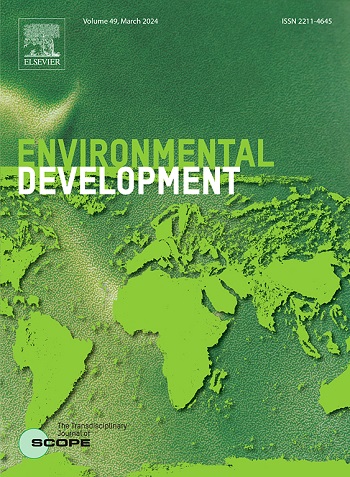基于物联网提高废物管理的可持续性:一个强大的混合决策框架
IF 5.3
2区 环境科学与生态学
Q2 ENVIRONMENTAL SCIENCES
引用次数: 0
摘要
在智慧城市中实施物联网(IoT)的实际领域之一是废物管理系统(WMS),由于人口密度的增加,这一点至关重要。物联网在WMS中的实施面临许多挑战,这些挑战会影响该技术的成功执行。因此,本研究旨在提出不确定性下的混合MCDM框架,以评估在智慧城市WMS中实施物联网的挑战。本研究考虑了一系列标准,包括技术层面、技术能力和可持续发展的各个方面。然后,利用最佳最差法(BWM)方法对标准进行加权。接下来,使用基于平均解决方案距离(EDAS-G)技术的灰色评估来评估物联网在WMS中的挑战。提出了理想解相似偏好排序灰色技术(TOPSIS-G)、备选方案灰色复比例评估(COPRAS-G)和灰色加性比率评估(ARAS-G)技术来检验其有效性。调查结果显示,缺乏信息技术(IT)基础设施/架构是最关键的挑战。决策者和规划者必须为各个领域的物联网实施提供合适的设施和架构。通过财政奖励和加强与企业的合作,吸引投资和发展信息技术基础设施等领域得到改善。本文章由计算机程序翻译,如有差异,请以英文原文为准。
Improving sustainability in waste management based on the Internet of Things: A robust hybrid decision-making framework
One of the practical fields for implementing the Internet of Things (IoT) is Waste Management Systems (WMS) in smart cities, which is vital due to the increase in population density. The implementation of IoT in the WMS faces many challenges that affect the successful execution of this technology. Therefore, this examination aims to present a hybrid MCDM framework under uncertainty to evaluate the challenges of implementing IoT in WMS of smart cities. A set of criteria, including technical dimensions, technological capabilities, and aspects of sustainable development, are considered in this research. Then, criteria are weighted utilizing the Best Worst Method (BWM) approach. Next, the challenges of IoT in the WMS are assessed using the Grey Evaluation based on the Distance from Average Solution (EDAS-G) technique. The Grey Technique for Order of Preference by Similarity to Ideal Solution (TOPSIS-G), Grey COmplex Proportional Assessment of alternatives (COPRAS-G), and Grey Additive Ratio Assessment (ARAS-G) techniques are proposed to examine the validation. The findings indicated the lack of Information Technology (IT) infrastructure/architecture was the most critical challenge. Policymakers and planners must provide suitable facilities and architecture for IoT implementation in various fields. The fields of attracting investments and developing IT infrastructure are improved through financial incentives and better cooperation with companies.
求助全文
通过发布文献求助,成功后即可免费获取论文全文。
去求助
来源期刊

Environmental Development
Social Sciences-Geography, Planning and Development
CiteScore
8.40
自引率
1.90%
发文量
62
审稿时长
74 days
期刊介绍:
Environmental Development provides a future oriented, pro-active, authoritative source of information and learning for researchers, postgraduate students, policymakers, and managers, and bridges the gap between fundamental research and the application in management and policy practices. It stimulates the exchange and coupling of traditional scientific knowledge on the environment, with the experiential knowledge among decision makers and other stakeholders and also connects natural sciences and social and behavioral sciences. Environmental Development includes and promotes scientific work from the non-western world, and also strengthens the collaboration between the developed and developing world. Further it links environmental research to broader issues of economic and social-cultural developments, and is intended to shorten the delays between research and publication, while ensuring thorough peer review. Environmental Development also creates a forum for transnational communication, discussion and global action.
Environmental Development is open to a broad range of disciplines and authors. The journal welcomes, in particular, contributions from a younger generation of researchers, and papers expanding the frontiers of environmental sciences, pointing at new directions and innovative answers.
All submissions to Environmental Development are reviewed using the general criteria of quality, originality, precision, importance of topic and insights, clarity of exposition, which are in keeping with the journal''s aims and scope.
 求助内容:
求助内容: 应助结果提醒方式:
应助结果提醒方式:


